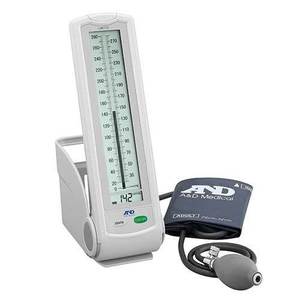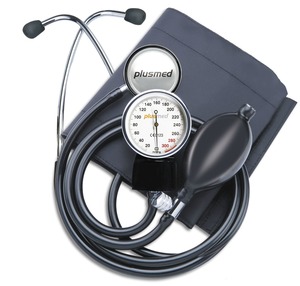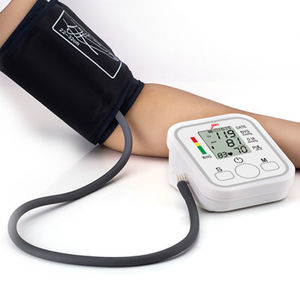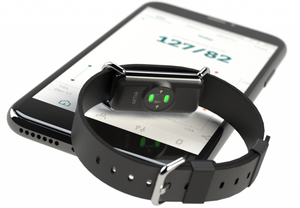 The contemporary modern lifestyle has unquestionably resulted in increased health dangers, one of which is high blood pressure. Higher blood pressure is a significant health concern for several reasons, which is why a reliable Blood Pressure Monitor or Sphygmomanometer is essential.
The contemporary modern lifestyle has unquestionably resulted in increased health dangers, one of which is high blood pressure. Higher blood pressure is a significant health concern for several reasons, which is why a reliable Blood Pressure Monitor or Sphygmomanometer is essential.
Before we get into how to choose the perfect blood pressure monitor for you and your household, let us check out the different types you may want to look into:
Types of Blood Pressure Monitors
There are so many innovations when it comes to kinds of BP monitors. Due to these innovations, an easier and more convenient way to monitor one’s blood pressure has risen. Below you can find three significant types of Blood Pressure Monitors and their pros and cons.
Mercury Sphygmomanometer

A mercury sphygmomanometer is the most conventionally known type of blood pressure monitor. This type of BP monitor is considered the standard in the health industry. It is made with a manual arm cuff attached to mercury infused tubes.
Advantage:
- If in proper care, mercury Sphygmomanometers can last a lifetime.
- Provides the most accurate reading in comparison to the other two types. Even with little to no calibration, mercury blood monitors offer accurate readings.
Disadvantage:
- From its name, this blood pressure monitor is made of mercury which is highly toxic if exposed; hence, in countries like Sweden and Netherlands, this type has been banned in clinical practices.
- They are bulky to carry around. The other two types are more portable by a mile in comparison.
- A level flat surface is needed to ensure the reading is perfectly accurate.
Aneroid Sphygmomanometer

Aneroid, to put it simply, means “without fluid.” This device does not utilize mercury but works with the same idea. With this blood pressure monitor, the cuff is connected to a dial gauge with tubing with a mechanical knob-like attachment that converts the pressure from the pump into a gauge-based reading.
Advantages:
- The main advantage of this kind of blood monitor is its price range. They are noticeably cheaper in comparison to both mercury and digital sphygmomanometers.
- They are also portable so that they can be carried around easily.
- Can give accurate reading like how the mercury sphygmomanometer can
Disadvantage:
- This kind of blood pressure monitor is fragile and can easily break if not handled properly
- You must ensure that this is calibrated in order to provide accurate readings.
Digital Sphygmomanometer

This is what is considered the more recent technological innovation when it comes to blood pressure monitors. To measure blood pressure, this uses electronic pressure. The readings are shown on a digital display. Like how both mercury and aneroid sphygmomanometer works, there is also an inflatable pump connected to this kind of blood pressure monitor. Digital Sphygmomanometers measures the fluctuations of arteries.
Advantages:
- Perfect for home use as there is no learning curve in using this. Place the cuff in the right position (to know more about how to use sphygmomanometers read here), press the button and you are good to go.
- You can easily check your own blood pressure alone which also makes this perfect for the need for constant monitoring.
- Portable
Disadvantage
- They are pricier
- Digital Sphygmomanometers’ reading can be inaccurate; hence it is important to still take the opportunity to get your blood pressure tested with manual sphygmomanometers.
- Very delicate
Wrist/ Finger Based Blood Pressure Monitor

With the innovation of “smart” technology comes a cuffless wrist/finger-based blood pressure monitor. This technically falls under the digital sphygmomanometers, however, the advantage for this is that you can easily carry these types around and conveniently check your blood pressure anytime anywhere.
Advantage:
- With its size, you can easily carry this around with you for constant checking throughout a busy day
- Best option for people with a disability as this is very convenient to use.
Disadvantage:
- Readings may not be that accurate with all the outside factors that can affect the reading process.
- They can be pricier than analogue ones.
How to Choose your Next Blood Pressure Monitor
Need and budget:
If you are looking for highly accurate readings, then an aneroid sphygmomanometer is the one for you, however, use of this kind requires sufficient knowledge and there is a bigger learning curve. If you are willing to learn then yes this is the perfect choice for you, especially as it is also the cheaper option. On the other hand, if you are just looking for an easy-to-use blood pressure monitor for home monitoring and you have the budget for it, then we would recommend getting a digital monitor.
Accuracy:
As previously mentioned, if you really want a perfectly accurate reading then a mercury sphygmomanometer is the option for you, but for safety reasons, an aneroid sphygmomanometer would be the better choice as this also has high accuracy, not as perfect as mercury, but still very accurate. Digital ones are not as accurate but are the most convenient. At the end of the day however, there something you must observe to get the most accurate reading!
Convenience and Portability
Assess in what environment you would need your sphygmomanometer. If you are desiring to get one for a clinic or a first aid station, something lightweight but still durable is your choice. But, if you are only looking for a blood pressure monitor to use at home, then save yourself some money and just buy non-lightweight or pocket-sized monitors.
—————-
Make sure to keep these things in mind in getting your first or new blood pressure monitor! After reading through this, you should now have a general idea of what you are looking for, check out the top 10 blood pressure monitors you can get here!
Last Updated on
- How to clean standing fan easily - September 24, 2022
- How Long Does a Fan Last? – Electric fan Maintenance Guide - September 23, 2022
- Can electric fans be left on 24 hours a day? - September 23, 2022
